TABLE OF CONTENTS
- CMMS
- Industry
- CMMS Software for Government & Municipalities
Why is CMMS Software Needed for Government and Municipality Maintenance?
Government and municipal maintenance departments are entrusted with managing and maintaining public infrastructure, facilities, and assets that directly impact the lives of residents. As the demands on these departments continue to grow, an efficient and effective system to streamline operations becomes essential.

Increasing Demands on Public Infrastructure
In an era of expanding urbanization and population growth, the demand for well-maintained public infrastructure has reached unprecedented levels. Roads, bridges, public buildings, water treatment plants, and other assets are continually subjected to wear and tear. CMMS software equips government and municipality maintenance departments with the tools necessary to meet these growing demands.
By providing a centralized platform for asset management and maintenance, CMMS allows these departments to proactively monitor the condition of infrastructure and schedule maintenance before problems become critical. This extends the lifespan of assets and minimizes downtime and disruptions that can inconvenience the public.

Efficient Resource Allocation
Government and municipality maintenance departments often operate with constrained budgets and limited resources. CMMS software plays a pivotal role in optimizing resource allocation. It provides a data-driven approach to maintenance by offering insights into which assets require immediate attention, which can wait, and where resources can be reallocated for maximum impact.
With the ability to prioritize maintenance tasks and allocate resources efficiently, CMMS ensures that essential services and infrastructure remain functional, enhancing residents' overall quality of life while making the most of available budgets.
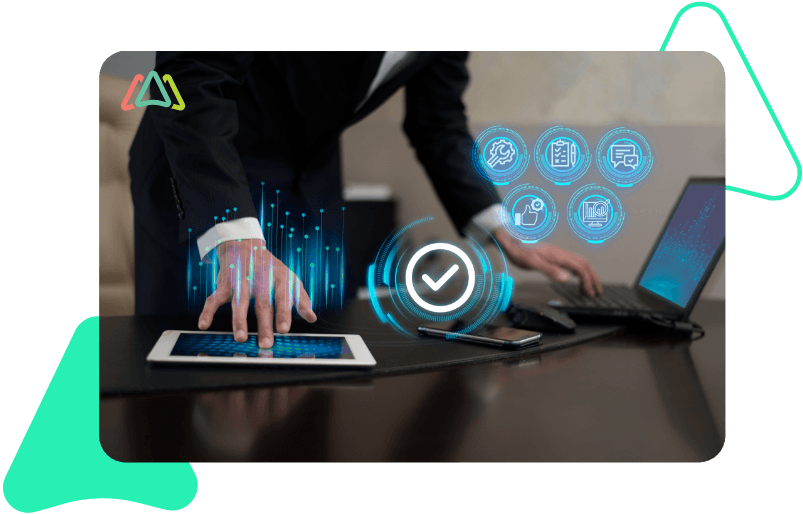
Regulatory Compliance and Reporting
Government and municipal maintenance operations are subject to various regulations, standards, and reporting requirements. CMMS software simplifies the process of compliance and reporting. It allows maintenance departments to keep accurate records of maintenance activities, inspections, and repairs, ensuring they align with local, state, and federal regulations.
Moreover, CMMS software generates reports for audits, compliance checks, and performance evaluations. These reports help ensure that maintenance operations meet all legal obligations and facilitate transparency and accountability, both of which are vital for government entities.

Improved Accountability and Transparency
Accountability and transparency are fundamental in the public sector. Citizens and stakeholders expect their government and municipal bodies to operate efficiently, honestly, and with complete transparency. CMMS software promotes these principles by tracking maintenance and facility upkeep costs and planned spending.
By offering a clear and documented view of maintenance operations, CMMS software ensures that every action taken by maintenance staff is recorded and accessible. This transparency builds trust with the public but also assists in identifying areas for improvement and cost-saving measures.
Maintenance Challenges Specific to Governments & Municipalities
Aging Infrastructure
Governments and municipalities often manage infrastructure that has been in place for decades, if not centuries. This aging infrastructure presents maintenance challenges due to wear and tear, deteriorating conditions, and the need for extensive rehabilitation and modernization.
Regulatory Compliance
Governments and municipalities are subject to various regulations and standards, especially in areas like public safety, environmental compliance, and accessibility, that often evolve over time. Staying up-to-date with changing regulations and ensuring compliance in maintenance activities is critical but can be complex.
Public Expectations for Service Quality
The residents and constituents of a municipality expect high-quality services and well-maintained infrastructure. Meeting these expectations while working within budget constraints can be challenging. Any service disruptions, road closures, or utility outages can result in public dissatisfaction and scrutiny.
Prioritizing Maintenance Needs
Governments and municipalities must prioritize maintenance tasks, given the limited resources and the sheer volume of assets and facilities to maintain. This requires data-driven decision-making, an understanding of critical assets, and effective preventive and reactive maintenance scheduling.
Accountability and Transparency
Public sector maintenance activities must be conducted with a high level of accountability and transparency. This includes documenting work orders, expenses, asset histories, and compliance with regulations. Ensuring this level of transparency can be challenging without the right systems in place.
Public Relations and Community Impact
Maintenance activities, especially when they involve major construction or repairs, can significantly impact residents' daily lives. Effective communication and community relations are vital to minimize disruptions and maintain public support.
Multi-Department Collaboration
Governments and municipalities often involve various departments and agencies in their maintenance efforts. It can be challenging to coordinate efforts and ensure that all departments are aligned in their maintenance goals.
Limitations of Conventional Maintenance Approaches
Modern Challenges, Outdated Solutions
Limited Accountability and Transparency
Paper-based or disjointed systems may not provide the level of accountability and transparency required in the public sector. Governments and municipalities must be able to document maintenance activities and ensure compliance with regulations and standards.
Fragmented Processes
Many government and municipal departments and agencies are involved in maintenance activities, leading to fragmented processes. Conventional methods can exacerbate this problem, making coordinating efforts and sharing information challenging.
Budgetary Constraints
Public sector entities often operate within tight budgets, and conventional approaches may not offer the tools needed for cost-effective maintenance planning and resource allocation.
Geographic Diversity
Municipalities often cover large geographic areas. Conventional approaches can hinder the ability to cover these territories efficiently and respond to maintenance requests promptly.
Ineffective Asset Management
Conventional approaches struggle to manage and track the vast and diverse assets governments and municipalities manage. Effective asset lifecycle management is essential to reduce costly breakdowns..
Inefficiency
Conventional approaches rely on manual, paper-based systems or outdated software. This inefficiency can lead to delayed response times, increased downtime of critical assets, and reduced service quality.
Audit Trails
CMMS maintains detailed records of all maintenance activities, work orders, and asset maintenance history. This documentation is vital for government entities to demonstrate compliance, track changes, and provide accurate audit trails for regulatory bodies.
Click Maint CMMS Features that Improve Government and Municipality Maintenance
CMMS software is equipped with a diverse array of features designed to streamline maintenance processes and enhance the efficiency of government and municipality maintenance departments. These features address the unique challenges public sector entities face, offering solutions that cater to their specific needs.
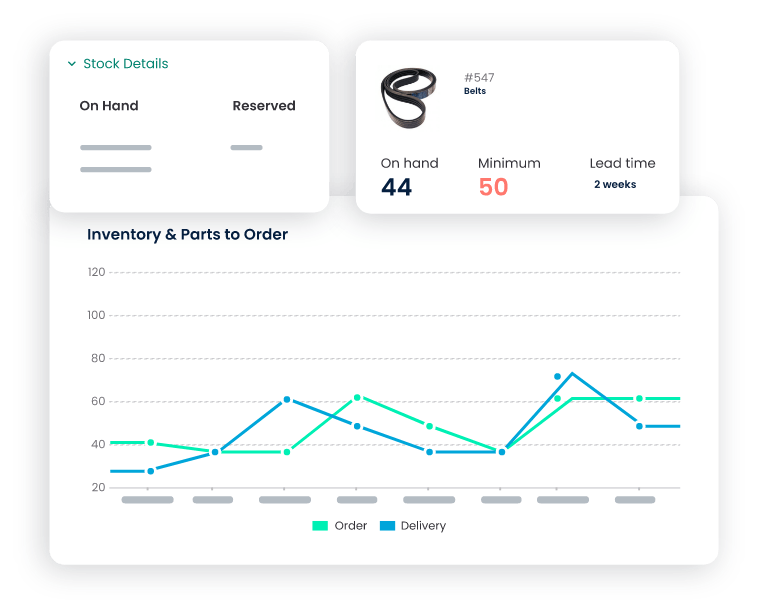
Asset & Inventory Management
- Centralized Asset Tracking: Governments and municipal corporations deal with a wide range of assets, from roads and bridges to public buildings and utility systems. CMMS software provides a centralized database for tracking these assets, offering in-depth information about their condition, location, maintenance history, and depreciation.
- Inventory Control: CMMS enables efficient management of spare parts and materials necessary for maintenance activities. This feature helps prevent repair delays and reduces the cost of holding excess inventory.
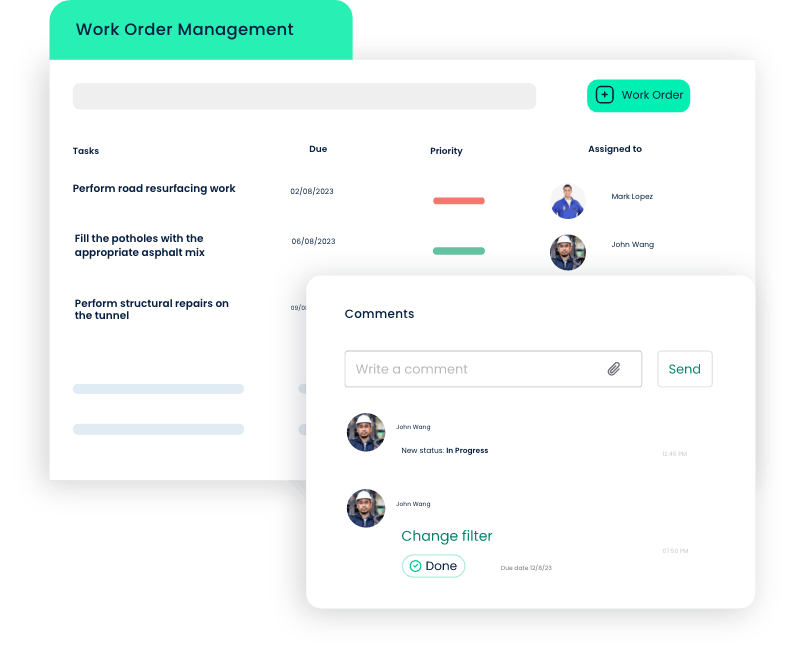
Work Order Management
- Streamlined Work Order Creation: Governments and municipalities generate numerous work orders daily. CMMS systems simplify this process, allowing maintenance teams to efficiently create, prioritize, and assign work orders.
- Real-Time Updates: Maintenance staff can update work orders in real-time, ensuring that everyone has access to the most current information, which is essential for swift response and decision-making.
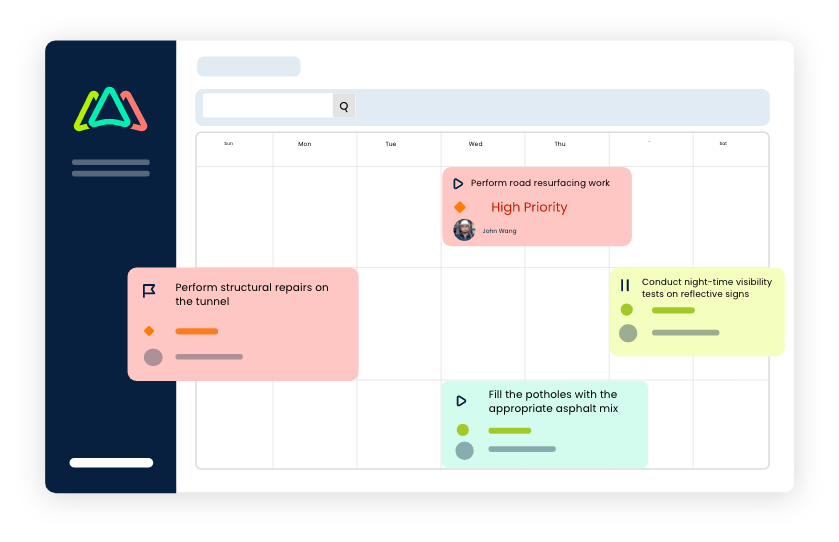
Preventive Maintenance
- Scheduled Maintenance: CMMS software supports preventive maintenance by allowing governments to schedule routine inspections, servicing, and repairs. This proactive approach minimizes the risk of asset failures and extends their lifespan.
- Asset Condition Monitoring: The system continuously tracks the condition of assets, notifying maintenance teams when it's time for scheduled maintenance ensuring that all assets remain in good working condition.
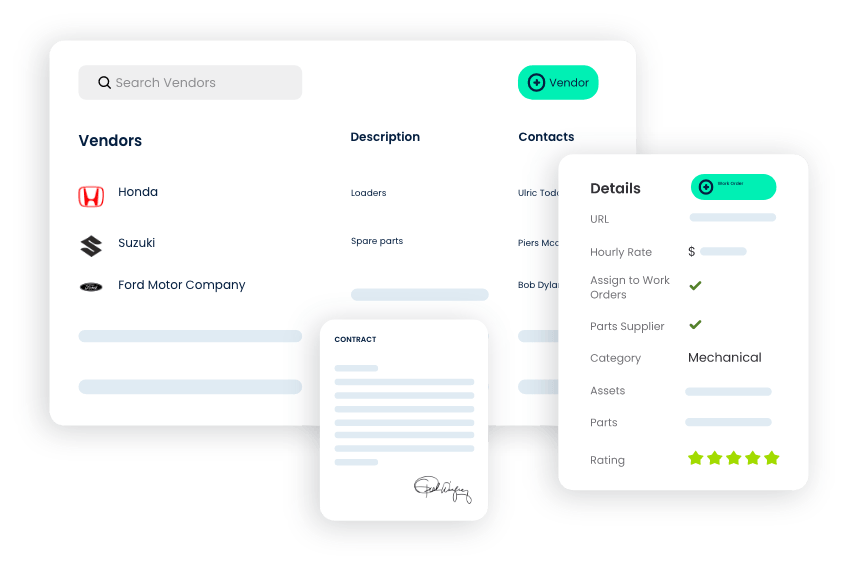
Labor & Vendor Management
- Labor Allocation: Effective workforce management is essential for governments and municipal corporations. CMMS systems help optimize labor allocation by matching skill sets with maintenance tasks and tracking labor hours for cost analysis.
- Vendor Collaboration: Municipal maintenance often involves third-party vendors. CMMS facilitates vendor management, making collaborating on service requests, maintenance contracts, and performance evaluations easy.
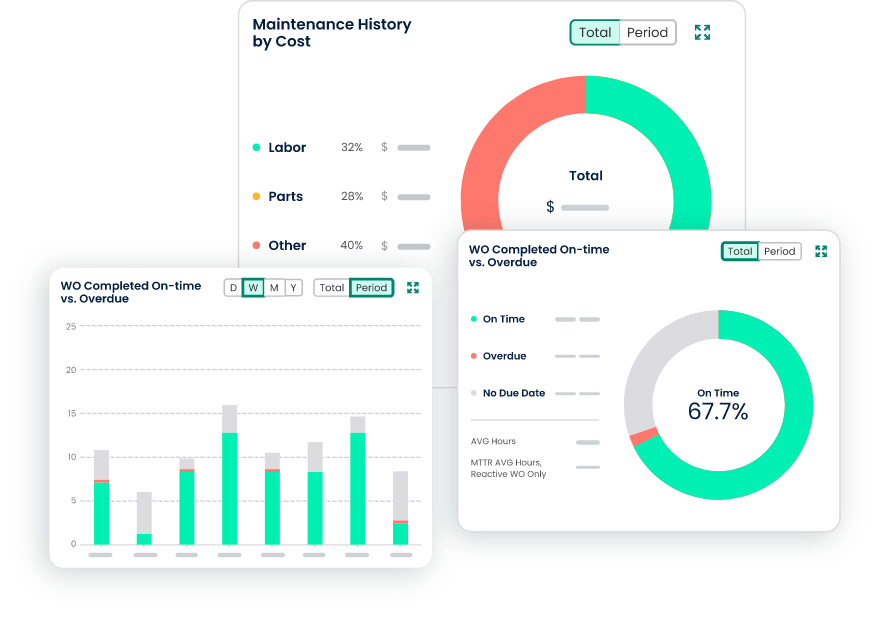
Reporting, Analytics & KPIs
- Customizable Reports: CMMS can generate customized reports for various purposes, including maintenance history, budget analysis, and regulatory compliance. These reports are essential for transparency and decision-making.
- Data-Driven Insights: The software converts raw maintenance data into actionable insights. With analytics and key performance indicators (KPIs), governments and municipalities gain a deeper understanding of their maintenance operations, allowing for informed strategic planning and continuous improvement.
Full-Feature Mobile Accessibility
Mobilize Your Municipal Maintenance
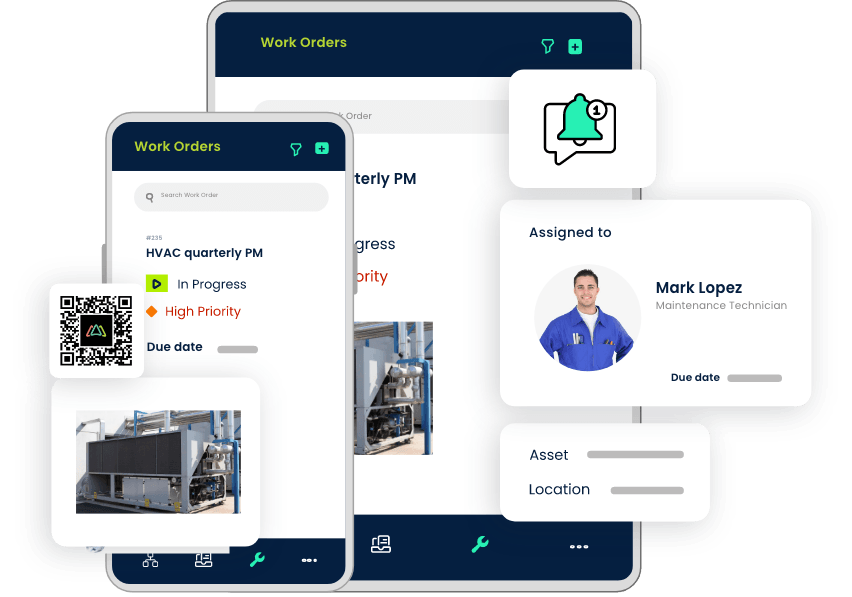
Real-Time Updates and Communication
Enable maintenance staff to receive and update work orders in real-time, allowing for immediate communication and collaboration. This feature is essential for rapid response to maintenance requests, especially in emergency situations.
Improved Field Productivity
Maintenance teams working in the field can access work orders, asset information, and historical maintenance data directly from their mobile devices. This quick access to data and resources enhances productivity and empowers field staff to make informed decisions on-site.
Asset Data at Your Fingertips
Mobile CMMS provides access to asset information, including maintenance histories, repair manuals, and other critical data, right on the field. This reduces the need to return to the office for reference, saving time and minimizing downtime.
Increased Accountability
Field personnel can log their work directly into the CMMS while on-site. This electronic documentation promotes greater accountability and ensures that maintenance activities are accurately recorded and tracked, improving transparency and regulatory compliance.
Efficient Work Order Management
Maintenance teams can create and assign work orders using mobile devices, streamlining the process and reducing paperwork. Field staff can also instantly update work orders with relevant information, progress, and completion status.
GPS and Mapping Integration
Mobile CMMS often includes GPS and mapping features, allowing field staff to easily view asset locations, plan efficient routes, and navigate to service locations. This capability is particularly valuable for large municipalities with diverse assets.
Access to Historical Data
Field workers can access past maintenance records and asset history, helping them better understand an asset's condition and maintenance needs. This historical context aids in making informed decisions on maintenance tasks.
Enhanced Collaboration
Mobile CMMS facilitates communication between maintenance teams and various departments or agencies within the government or municipality. Coordination and collaboration are essential for efficient operations, and mobile accessibility promotes these efforts.
Cost Savings
Efficient field operations, reduced downtime, and improved asset management contribute to government and municipalities' cost savings. These savings can be reallocated to other essential services and projects.
Quick Response to Citizen Requests
Municipal residents can report maintenance issues or service requests through mobile apps or websites, which can then be integrated into the CMMS for maintenance teams to receive and respond to these requests promptly. This enhances the quality of public service and citizen satisfaction.
Streamlining Maintenance Management with a User-Friendly Interface
Effortless Navigation
The first thing you'll notice when interacting with Click Maint CMMS is its intuitive navigation. Our user-friendly interface is designed with ease of use in mind. Whether you're a seasoned maintenance professional with years of CMMS experience or new to it, you'll find it easy to navigate through the software.
Accessible Work Orders
Creating, assigning, and managing work orders is a breeze. Our user-friendly interface lets you input details, set priorities, and assign tasks quickly. You can also track work orders in real time, ensuring your maintenance team stays on top of their tasks.
Creating Work Orders is
EASY AS 1-2-3!
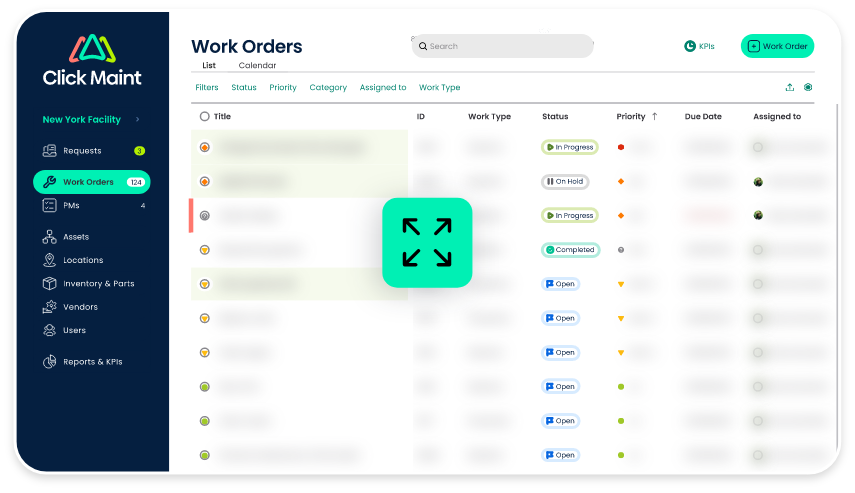
Asset Management Made Simple
Managing assets is vital to maintenance management, and Click Maint CMMS simplifies this process. You can easily create asset profiles, track their maintenance history, and set up preventive maintenance schedules, all from an intuitive interface.
Quick Reporting & Analytics
Accessing maintenance data and generating reports is straightforward with Click Maint CMMS. Our user-friendly interface provides efficient reporting and analytics tools to help you make informed decisions and track your maintenance performance effectively.
Easy Implementation & Onboarding
We understand that transitioning to a new system can be challenging. Click Maint CMMS offers extensive training and support to ensure a smooth onboarding process. Our user-friendly interface is designed to reduce the learning curve and facilitate a quick and efficient transition.
Choose Your Hosting Location
Click Maint offers hosting location options for your data
Choosing a CMMS hosted in Canada or the US depending on your organization’s requirements offers several advantages for government and municipal entities on both sides of the border. These benefits extend beyond efficient maintenance management and can be summarized as follows:
Data Security and Privacy Compliance
- Stringent Data Protection: Canada has established a robust legal framework for data security and privacy compliance. By hosting data in Canada, government and municipal entities can benefit from the country's stringent data protection regulations, which align with global privacy standards, including GDPR (General Data Protection Regulation). In the US, data hosting complies with American data security regulations and standards, ensuring that sensitive information is well-protected.
- Enhanced Data Security: Hosting data in either Canada or the US based on your requirements provides an added layer of protection against data breaches and unauthorized access. Both Canadian and American governments place a strong emphasis on the security and integrity of data hosted within their respective borders.
- Privacy Shield Benefits: The European Union recognizes Canada as having an adequate level of data protection, ensuring that data hosted in Canada complies with the stringent EU regulations, which is especially relevant for US government agencies operating globally.
- CCPA Compliance (for data hosted in US): Data hosted in the US, particularly for US government agencies, complies with additional state-level data protection laws such as the California Consumer Privacy Act (CCPA). This ensures that personal data is handled in accordance with the specific regulations of California, enhancing privacy and data security.
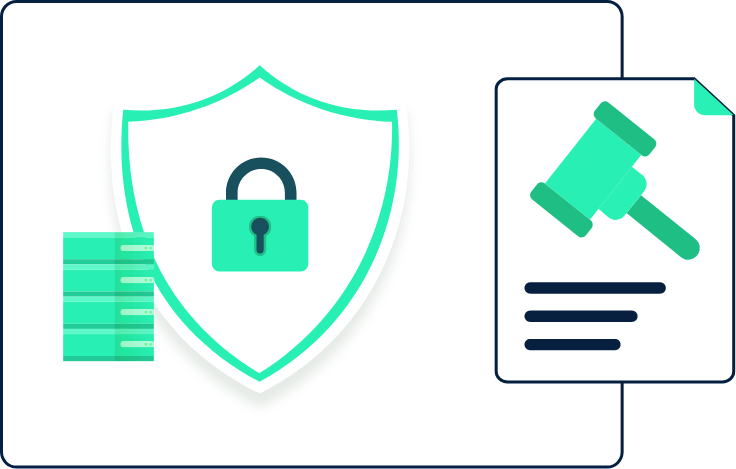
Data Sovereignty Considerations
- Control and Ownership: Hosting data in Canada or the US ensures that government and municipal entities maintain control and ownership of their data. This is particularly vital for sensitive information and respective governmental records.
- Mitigation of Legal Risks: Data sovereignty concerns can be addressed by ensuring that data remains within either Canadian or American jurisdiction. This mitigates the legal risks associated with international data transfers and aligns with regulatory requirements, including state-specific regulations like CCPA.
- Cross-Border Data Management: For US government agencies working collaboratively with Canadian counterparts, hosting data in Canada simplifies cross-border data management while maintaining compliance with both US and Canadian regulations. Similarly, Canadian agencies partnering with US entities can manage data efficiently while adhering to local and state-level regulations, including CCPA.

Cross-Border Collaboration and Interoperability
- Seamless Collaboration: Governments and municipalities often engage in cross-border collaboration, such as sharing infrastructure data, resources, and maintenance expertise. Hosting data in Canada or the US facilitates smoother collaboration between US and Canadian entities, ensuring interoperability and data exchange.
- Efficient Information Sharing: CMMS hosted in Canada or the US offers government and municipal agencies the assurance of efficient and secure information sharing with their counterparts. This promotes efficient cross-border projects and service coordination, regardless of the hosting location.
- Interconnected Systems: CMMS hosted in Canada or the US can be configured to allow interconnected systems that enable data sharing while respecting data sovereignty requirements. This interconnectedness ensures that both US and Canadian entities can work together without compromising on privacy or security.


